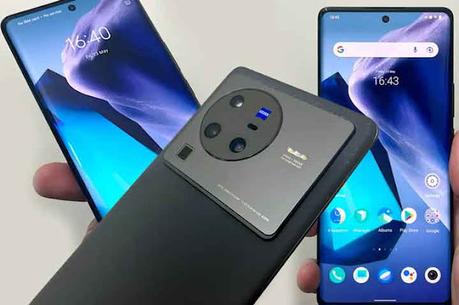Vivo has announced its latest flagship phone, the X80 Pro, and its most prominent new hardware feature is a larger on-screen fingerprint sensor. The active area is much larger than the small sensors found on most Android phones these days, which means it's easier to unlock the phone without looking at the screen to align your thumb.

The scanner has several advantages beyond being physically larger. You can register each finger with a single tap on the screen, rather than having to pick it up and press it multiple times as with conventional phones. It works very quickly, even if your hands or screen is wet. The larger surface area also means you can configure the phone to require two simultaneous fingerprints for an extra layer of authentication.
The "3D Ultrasonic Large Fingerprint Sensor" technology actually comes from Qualcomm, which calls it the "3D Sonic Max" and has touted its inclusion in a recent phone from Vivo's gaming-focused iQOO sub-brand. The X80 Pro represents the most conventional deployment of this technology yet.
As a company, Vivo has done more than any other to popularize in-display fingerprint sensors, having introduced the world's first implementation in a shipping phone in 2018. Vivo has demonstrated larger scanning surface areas on "Apex" concept phones, including a "full-screen" version in its 2019 model, but the X80 Pro is one of the first commercial devices to ship with a module that's larger than the tip of the thumb.
Vivo is also increasingly known for its camera prowess these days, and it's a great focus with the X80 Pro. The Zeiss-branded camera hardware (complete with the trademark T* coating on the lenses) is similar to what we saw with last year's X70 Pro Plus, though Vivo has yet to announce a Plus version of the X80 Pro. There's a 50-megapixel main sensor, a 48-megapixel ultra-wide-angle, a 12-megapixel 2x telephoto lens, and an 8-megapixel 5-megapixel periscope telephoto lens, all housed in a gigantic camera bulge. One difference is that the 2x lens now uses Vivo's gimbal-style optical stabilization.
Vivo is also making use of a new custom image chip called the V1 Plus. Like Oppo's MariSilicon X chip unveiled earlier this year, the V1 Plus' hardware is designed to handle image processing in difficult situations like night video capture. Another processing-intensive use case on the X80 Pro is a "cinematic video bokeh" mode designed to emulate the oval bokeh seen in shallow-depth scenes taken on Zeiss anamorphic lenses. Vivo says the chip also makes it possible to reduce power consumption.
The X80 Pro's other specs are typical of a 2022 flagship Android phone. There's a Snapdragon 8 Gen 1 processor, 12GB of RAM, and 256GB of storage. The display is a 6.78-inch, 1440p curved OLED panel with a 120Hz refresh rate. The battery is 4,700 mAh and chargers up to 80 W with a cable or 50 W wirelessly through Vivo's patented FlashCharge system.
We don't have any information on pricing or regional versions for the X80 Pro yet. It is likely to reach the typical Vivo markets of India, Europe and East Asia.
